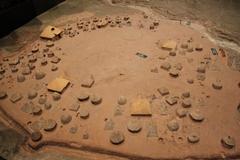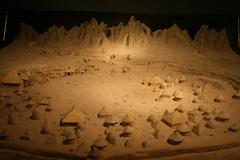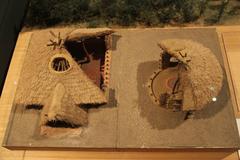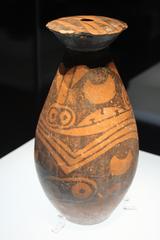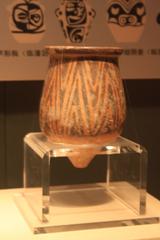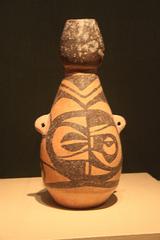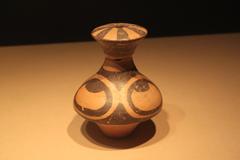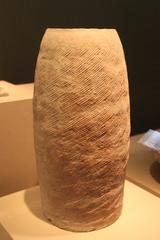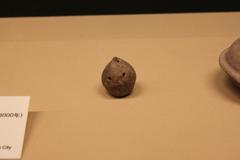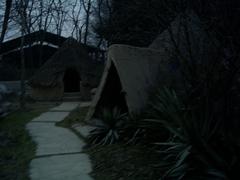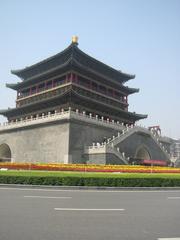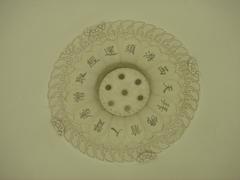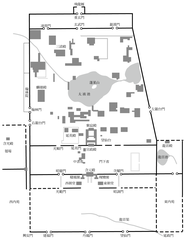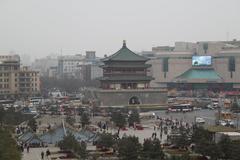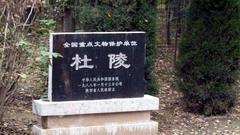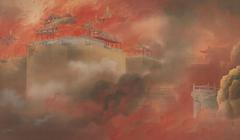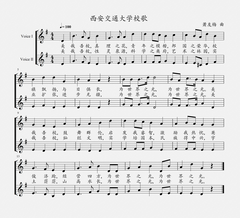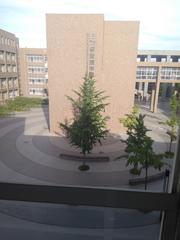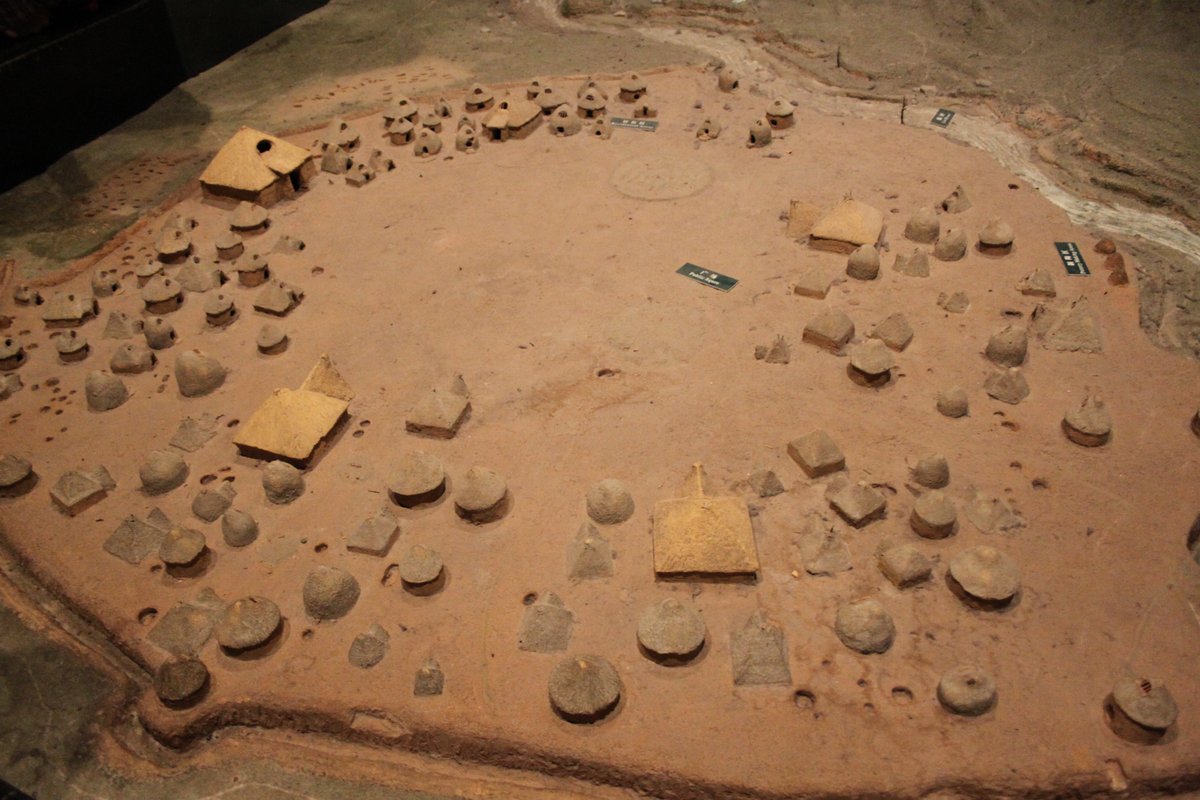
Jiangzhai Site Visiting Hours, Tickets, and Xi’an Historical Sites Guide
Date: 14/06/2025
Introduction to Jiangzhai Site in Xi’an
Located just east of Xi’an in Shaanxi Province, the Jiangzhai Site is one of China’s most significant Neolithic archaeological discoveries. Dating back to around 4700 BCE, Jiangzhai offers an exceptional view into the early Yangshao culture and the formative period of Chinese civilization. Visitors can explore the remnants of an organized clan-based village—complete with residential clusters, communal spaces, pottery kilns, and burial grounds—shedding light on prehistoric social structures, technology, and everyday life.
For history enthusiasts and cultural travelers alike, Jiangzhai delivers both archaeological authenticity and visitor accessibility. The site features bilingual interpretive signage, guided tours, and a visitor center. It is conveniently situated near other renowned attractions such as the Banpo Museum and the Terracotta Army, making it easy to incorporate into any Xi’an itinerary. Up-to-date information on hours, ticketing, and transportation is available through official resources and travel platforms.
This guide provides a comprehensive overview of Jiangzhai’s historical significance, practical visitor information, and tips to ensure a rewarding visit. For additional details, consult sources like the Shaanxi Tourism Website, China Highlights, and Trip.com.
Contents Overview
- Jiangzhai: Highlights and Key Reasons to Visit
- Hours, Tickets, and Visitor Logistics
- Historical Background and Archaeological Significance
- Site Layout and Visitor Facilities
- Guided Tours and Educational Resources
- What to See: Must-See Features
- Essential Visitor Tips
- Nearby Attractions and Suggested Itineraries
- Frequently Asked Questions (FAQs)
- Practical Considerations
- Summary and Visitor Recommendations
- Sources and Further Reading
Jiangzhai: Highlights and Key Reasons to Visit
The Jiangzhai Site is a premier destination for those interested in the origins of Chinese civilization. Located approximately 30 km from downtown Xi’an and 15 km east of the Banpo site, Jiangzhai stands out for its scale and preservation, offering:
- An authentic Neolithic village layout with five residential clusters.
- Archaeological finds including painted pottery, bone tools, and some of China’s earliest copper artifacts.
- Unique insights into early social organization, technology, and ritual practices.
Hours, Tickets, and Visitor Logistics
Opening Hours:
Jiangzhai is open daily from 8:30 AM to 5:30 PM (last entry at 4:30 PM). Hours may be adjusted seasonally or during holidays, so check official sources before your visit.
Ticket Prices:
Admission is typically 20–50 CNY for adults, depending on the season and available exhibitions. Discounts are provided for students, seniors, and children. Tickets can be purchased at the site or through official tourism websites.
Getting There:
- By Public Transport: Take bus lines 915 or 917 from Xi’an city center to Lintong District, then a short taxi ride to the site.
- By Car/Taxi: About 45 minutes from central Xi’an. Parking is available on-site.
- Tour Operators: Some local tours include Jiangzhai as part of broader historical itineraries.
Accessibility:
The main pathways are relatively flat and accessible for most visitors, though certain excavation areas may have uneven surfaces. Staff can assist visitors with mobility needs; wheelchair rentals are sometimes available.
Historical Background and Archaeological Significance
Jiangzhai is a textbook example of the early Yangshao culture (c. 5000–2900 BCE), particularly its Banpo phase. Excavations conducted from 1972–1979 revealed five distinct occupation phases, connecting Jiangzhai to broader regional developments and the later Longshan culture.
Key Archaeological Features
- Village Layout: The site covers about 50,000 m², with over 16,000 m² excavated. The village is organized into five residential clusters surrounding a central square, indicating a clan-based social system.
- Defensive Structures: A surrounding moat and evidence of communal water management demonstrate advanced planning.
- Mortuary Areas: Five burial grounds (three remain intact) correspond to different clans, with uniform grave goods suggesting limited social stratification.
- Material Culture: Over 10,000 artifacts have been found—including painted pottery, bone and stone tools, and early copper pieces. Pottery fragments with symbols may point to the origins of Chinese writing.
- Subsistence and Daily Life: Millet cultivation, pig husbandry, and hunting underpinned daily survival, while large storage pits ensured food security.
Jiangzhai’s archaeological discoveries not only illuminate local developments but also provide context for the broader emergence of complex societies in the Yellow River valley.
Site Layout and Visitor Facilities
Jiangzhai features an open-air site with protective shelters over key excavation zones. Well-marked paths and bilingual signage guide visitors through the residential, communal, and burial areas. Facilities include a visitor center with restrooms, a ticket counter, and a small gift shop. Drinking water is available, but food options are limited—plan accordingly.
- Restrooms: Located at the visitor center.
- Accessibility: Flat main paths; some uneven terrain in excavation areas.
- Parking: On-site parking for private vehicles and tour buses.
Guided Tours and Educational Resources
Guided tours (in English and Mandarin) are highly recommended for a deeper understanding of Jiangzhai’s significance. Tours typically last 60–90 minutes and cover the site’s history, layout, and major finds. Audio guides and printed brochures are also available, alongside educational displays in the visitor center.
- Advance Booking: Recommended for guided tours, especially in high season.
- School Groups: Special educational programs can be arranged by contacting the site administration.
What to See: Must-See Features
- Residential Structures: Over 40 semi-subterranean houses, some reconstructed for educational purposes.
- Pottery Kilns: Excavated kilns and in-situ displays of Yangshao painted pottery.
- Grain Storage Pits: Large communal pits for agricultural surplus.
- Burial Grounds: Adult and child burials with pottery and tools.
- Defensive Ditches: Evidence of ancient moats and ditches.
Essential Visitor Tips
Best Time to Visit
Spring (March–May) and autumn (September–November) offer the most pleasant weather. Avoid peak national holidays for a quieter experience.
Dress and Footwear
Wear comfortable, sturdy shoes and layered clothing. Bring sun protection and rain gear if needed.
Photography
Photography is allowed in most areas, but flash and tripods may be restricted. Respect all signage.
Accessibility
The site is mostly accessible, but some areas may require assistance for visitors with limited mobility.
Language
Signage is bilingual, but staff English proficiency may vary. A translation app can be helpful.
Safety and Etiquette
- Stay on marked paths.
- Do not touch or remove artifacts.
- Supervise children, especially around open pits.
- Smoking and littering are prohibited.
Nearby Attractions and Suggested Itineraries
Make the most of your visit by combining Jiangzhai with these nearby sites:
- Terracotta Warriors and Horses Museum: World-renowned Qin Dynasty tomb complex, 10 km north of Jiangzhai (China Highlights).
- Banpo Museum: Another major Yangshao site with a well-curated museum.
- Huaqing Palace: Famed for its hot springs and imperial gardens.
- Shaanxi History Museum: Displays artifacts from Jiangzhai and other prehistoric sites (The Nomadvisor).
A sample itinerary: Morning at Jiangzhai, lunch in Lintong, and an afternoon visit to the Terracotta Army.
Frequently Asked Questions (FAQs)
Q: What are Jiangzhai’s opening hours?
A: Generally 8:30 AM–5:30 PM, with last entry at 4:30 PM. Confirm in advance for seasonal changes.
Q: How much are tickets?
A: 20–50 CNY for adults, with discounts for students, seniors, and children.
Q: Is the site accessible for wheelchairs?
A: Main paths are flat, but some excavation areas are uneven. Staff can assist if needed.
Q: Are guided tours available in English?
A: Yes, but book in advance for English-language tours.
Q: Can I take photos?
A: Photography is allowed in most areas; flash and tripods may be restricted.
Q: How do I get there from Xi’an?
A: Take bus 915/917 to Lintong, then a short taxi ride; or drive/take a taxi directly.
Q: Is the site family-friendly?
A: Yes, it’s suitable for visitors of all ages, with open spaces and educational content.
Practical Considerations
- Restrooms: Available at the visitor center.
- Food and Drink: Bring your own water and snacks.
- Souvenirs: Gift shop offers books and pottery replicas.
- Weather: Check the forecast; site is mostly outdoors.
Summary and Visitor Recommendations
Jiangzhai Site is a vital link to China’s prehistoric past, offering a window into Neolithic village life and the early development of Chinese civilization. The site’s well-preserved remains, accessible visitor facilities, and proximity to other major attractions make it a rewarding destination for all types of travelers.
For a comprehensive experience, combine Jiangzhai with visits to the Terracotta Army, Banpo Museum, and other Xi’an historical sites. Plan ahead for tickets, transportation, and guided tours, and consult trusted resources for the latest updates. Enhance your visit with educational tools like the Audiala app for audio guides and interactive maps.
A journey to Jiangzhai is not just a tour of an ancient site—it’s an immersion into the roots of Chinese history and culture.
Sources and Further Reading
- Official Shaanxi Tourism Website
- Jiangzhai Site Visitor Info
- Yangshao Culture Overview
- Exploring Jiangzhai Site: A Must-Visit Shaanxi Historical Site with Practical Visitor Information, CN Pinyin
- China Highlights: Top Things to Do in Xi’an
- The Nomadvisor: Best Things to Do in Xi’an
Images: Include high-quality photos of the Jiangzhai Site ruins, painted pottery, and visitor pathways with descriptive alt text.
